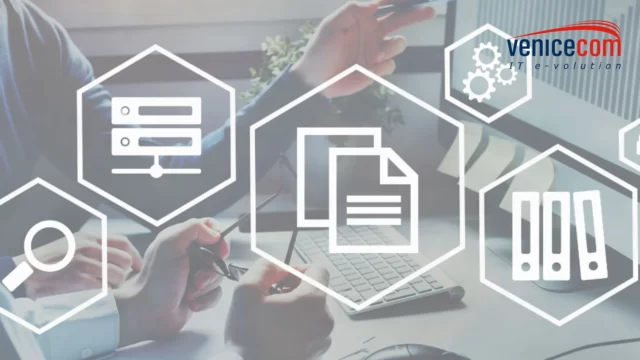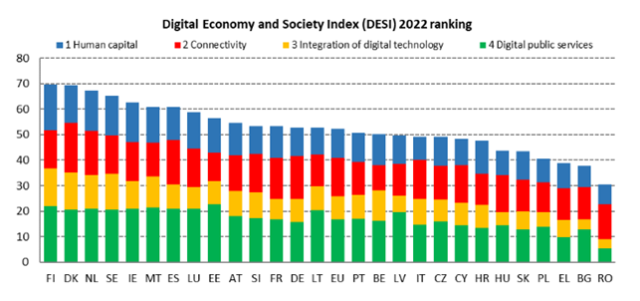From our daily exchange of opinions and experiences with the most authoritative interlocutors of the Italian Public Administration, we have gained a clear awareness: the path towards digital transformation is increasingly underway and present in projects and initiatives, both at the central and local levels.

Based on the objectives of the European Digital Agenda, constantly incorporated by AgID in the Triennial Plans for IT in Public Administration, digital technologies represent the essential pivot around which all relationships and communications to and from Public Entities must materialize: in particular, it is necessary to ensure that citizens can quickly access reliable information and/or clearly express their needs within a procedure or service, establishing with the Public Administration rapid communication with full legal value.
It is a topic where the ‘Italian System’ still has a lot of ground to cover.
In the DESI 2022 report (Digital Economy and Society Index), released at the end of July, Italy is positioned at the 18th place out of 27 countries in terms of digitalization:

Although marking a commendable improvement compared to the 20th position achieved in 2021, this result necessarily prompts some reflections.
An in-depth look at the 4 dimensions of analysis used by DESI shows that our difficulties are not technological in nature: in comparison with the other 26 EU member states, Italy in fact ranks 7th for the level of connectivity (Connectivity), and 8th for the speed of adoption of new technologies (Integration of Digital Technology).
This is precisely the guiding principle behind our Digital Administration Code (CAD) and the normative sources referred to therein, particularly the TUDA (Consolidated Administrative Document Act) and the AgID Guidelines.
In fact, Art. 2 states that central and local public administrations are required to ensure “the availability, management, access, transmission, preservation and usability of information in digital mode […] using, in the most appropriate manner and in the manner most suitable for the satisfaction of users’ interests, information and communication technologies.
We delved into the topic with Alessandra Caneva, Senior Consultant at Venicecom and coordinator of a pool of experts dedicated to the subject. We asked her what specifics characterize a document management system for public administration.
“The document management system of a Public Administration,” Dr. Caneva explained to us, “must make it possible to prepare documentation related to administrative processes, automate the protocol registration of documents and assign them to the relevant organizational units, manage classification and sorting processes, dematerialize the processing of document flows, and interact with the preservation system.”
We know that on these issues the main normative reference is the AgID Guidelines on the formation, management and preservation of IT documents: this document aims to encourage the adoption of infrastructures and standards that reduce the costs incurred by public administrations and improve the services provided to citizens.
“Complying with the AgID Guidelines may seem like a complicated project,” continues Dr. Caneva, “but if approached methodically, it can be conducted successfully and translate into tangible benefits for both the operational efficiency of the Entity and the quality of services to citizens.”
The right approach, according to Venicecom, requires strategic vision, effective governance and implementation capacity.
“It’s not a question of software,” concludes Dr. Caneva, “Most of the document management solutions on the market have now adapted their functionality to the indications of the AgID Guidelines; what really makes the difference is the ability to correctly define document processes, identify nonconformities, and schedule the necessary interventions, which may be purely organizational and/or may require new configurations of the software in use.”
In the methodology adopted by Venicecom, the Regulatory Adaptation Action Plan is the result of a thorough organizational analysis (Assessment), and typically takes the form of the drafting of internal manuals and regulations, appropriate configurations of software in use, adoption of new IT tools and/or interventions to integrate between them with a view to interoperability.
DISCOVER OUR SOLUTION FOR YOUR ASSESSMENT >
The “Document Management Manual” and its annexes, which according to the AgID Guidelines must be drafted and published by each PA, have the important function of representing document processes, ensuring that they are applied in a unified and consistent manner, and making them visible to the citizen with a view to transparency. Fundamental will also be the aspect of training PA staff in the new methods, processes, and tools so that they are applied consistently and homogeneously in the operations of the Authority, and internalized into the organizational culture.
Venicecom proposes itself as a partner of Public Administrations, supporting the Managers of the Transition to Digital in the whole complex of methods, tools and actions focused on implementing the requirements of the CAD and AgID Guidelines.
The benefits for Entities go beyond regulatory compliance: the adoption of the processes prescribed by the AgID Guidelines lays the foundation for a Public Administration that can present itself to its interlocutors, citizens and businesses, as a single entity, interoperable, and able to exchange data and information with simplicity and security.
As Italy is the EU’s third largest economy, its progress in digital transformation in the coming years will be crucial to enable the EU as a whole to achieve the goals of the Digital Agenda for Europe for the 2020-2030 decade. By putting innovation at the service of simplification, Venicecom intends to make its contribution, alongside the Italian PA, in providing methods and tools for the continuous improvement of dialogue with citizens and businesses.

